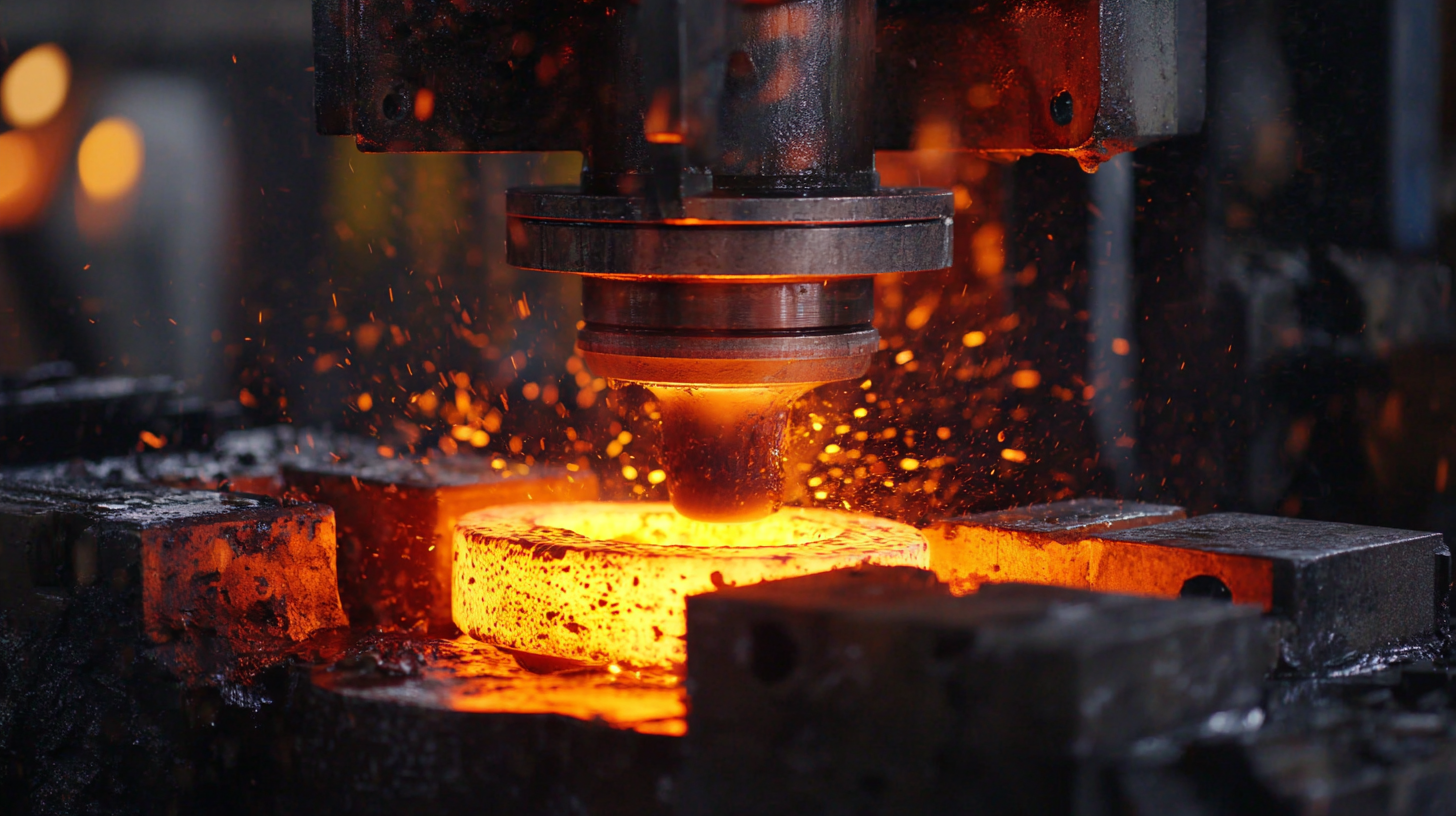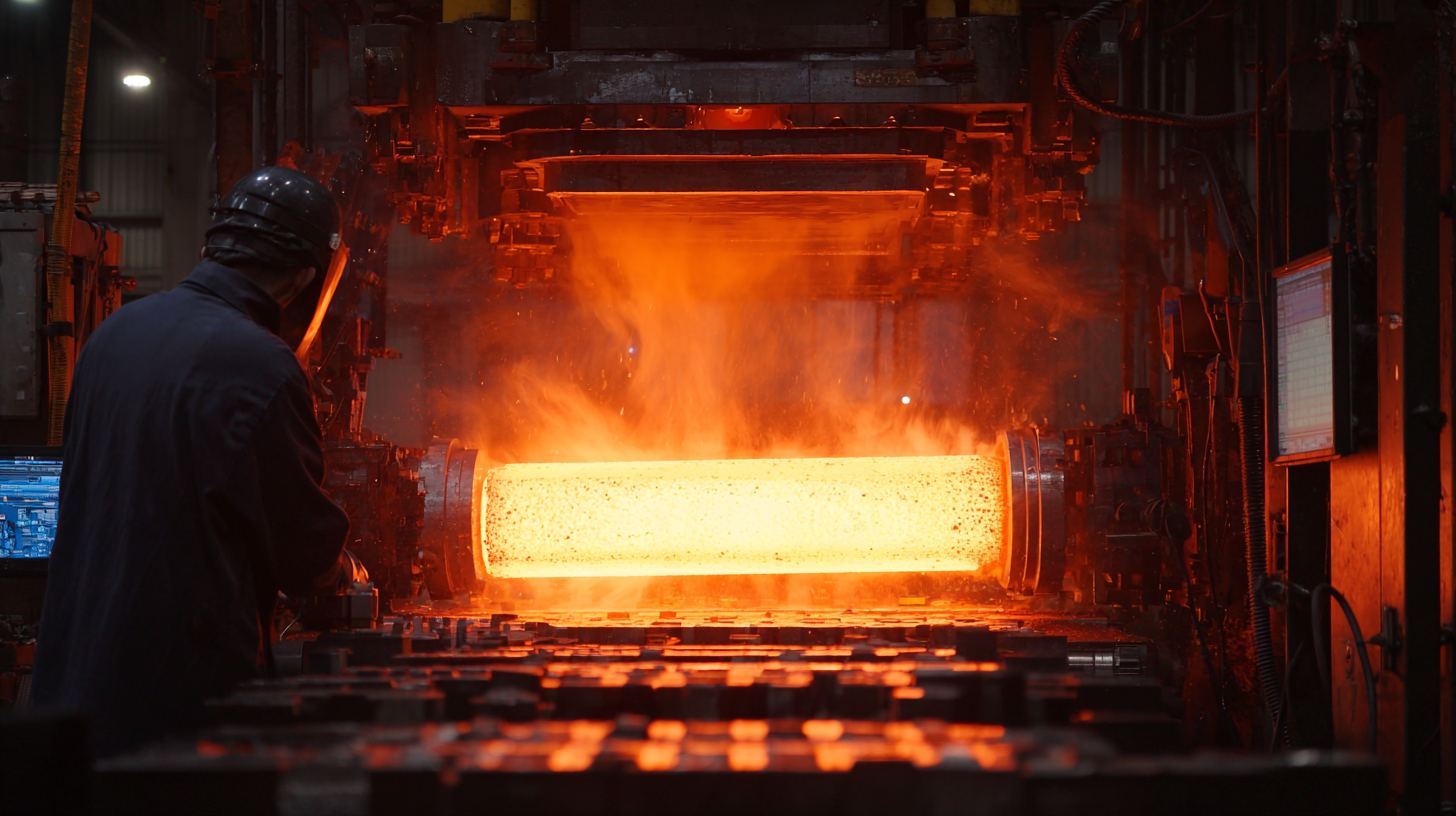Leave Your Message
-
Phone
-
E-mail
In today's rapidly evolving manufacturing landscape, staying ahead of the curve in technology trends is essential for success, particularly in the realm of Hot Forging Part production. As industries strive for greater efficiency and quality, embracing innovative processes and advanced technologies becomes paramount. This blog will explore the latest advancements in hot forging technology, highlighting the best practices that can optimize production workflows and enhance the overall quality of the forged parts. By leveraging cutting-edge solutions and embracing new methodologies, manufacturers can not only improve their output but also adapt to the ever-changing demands of the market. Join us as we delve into strategic insights and future trends that will empower your production process and drive your business forward in the competitive field of hot forging.

The hot forging process is a cornerstone of modern manufacturing, playing a crucial role in producing high-strength parts that are essential in various industries. This technique involves heating metal to a temperature where it becomes malleable, allowing for significant deformation without cracking. The key benefits of hot forging include improved mechanical properties, reduced residual stresses, and enhanced microstructure of the forged parts, making them ideal for applications in the automotive, aerospace, and machinery sectors.

Additionally, the versatility of hot forging enables manufacturers to produce complex geometries that would be challenging or cost-prohibitive with other methods. This process not only enhances the durability of the components but also helps in minimizing wastage, ultimately leading to more sustainable manufacturing practices. As industries evolve, embracing innovations in hot forging technology—such as advanced heating methods and automation—can further drive efficiency and productivity in production processes, paving the way for a more robust manufacturing future.
The global market for hot forging technologies is experiencing significant growth, driven by advancements in manufacturing processes and an increasing demand for high-quality components across various industries. As industries such as automotive, aerospace, and heavy machinery embrace these technologies, understanding the key market players and their growth strategies becomes essential. Major players in the sector—including companies specializing in advanced forging techniques and automation—are leveraging innovation to enhance production efficiency and quality, catering to the growing needs of end-users.
The rise of Industry 4.0 is further propelling the adoption of hot forging technologies. As manufacturers look to integrate smart technologies, data analytics, and IoT solutions into their operations, they are discovering new methods to optimize their production processes. This trend not only improves productivity but also allows for greater customization, enabling companies to meet specific client demands more effectively. In this dynamic environment, staying informed about market trends and the strategies employed by key players can provide manufacturers with a competitive edge as they strive to innovate and enhance their production capabilities.
In the ever-evolving landscape of hot forging technology, innovative materials play a crucial role in enhancing production processes. Advances in alloy selection are leading the way, with fresh insights into high-throughput rapid experimental alloy development (HT-READ) paving the way for the creation of tailored materials that can better withstand extreme conditions. This systematic approach allows for the exploration of various combinations and properties, thus accelerating the discovery of alloys that not only improve the efficiency of hot forging but significantly increase the strength and durability of the finished products.
Moreover, recent trends highlight the impact of multi-material additive manufacturing and nature-inspired designs, enriching the materials palette available for forging. Researchers are tapping into the potential of Fe-based shape memory alloys and lightweight metallic solutions, creating a pathway for integrating new functionalities and properties into traditional manufacturing techniques. Such innovations promise not just to enhance performance but also to reduce costs and improve sustainability in the production process, thereby making the future of hot forging technology both exciting and promising.
The hot forging industry is rapidly evolving, with automation and robotics taking center stage in enhancing production efficiency and quality control. According to a report by MarketsandMarkets, the global industrial robotics market is expected to grow from $41.7 billion in 2020 to $70.5 billion by 2026, reflecting a compound annual growth rate (CAGR) of 9.3%. This growth is indicative of the increasing adoption of robotic systems in manufacturing processes, including hot forging, where precision and speed are paramount.
By integrating automation into hot forging operations, manufacturers can significantly reduce cycle times and increase output. Automated systems streamline the handling and positioning of materials, ensuring that the forging process is not only faster but also more consistent. A study from the International Federation of Robotics highlights that factories implementing robotic automation have seen productivity gains of up to 30%. Furthermore, improved quality control mechanisms enabled by robotics minimize defects, providing a stronger return on investment through reduced scrap rates and reworks.
The push towards automation aligns with the industry's need for enhanced flexibility in production lines. As customizations and shorter production runs become more common, adopting robotic solutions allows for quick adjustments in workflow without extensive downtime. In this increasingly competitive landscape, leveraging automation and robotics in hot forging is not just a technological upgrade; it’s a strategic necessity for manufacturers aiming to optimize process efficiency and maintain high standards of quality.

The hot forging industry is experiencing a significant transformation driven by sustainability initiatives aimed at minimizing environmental impact. As businesses increasingly recognize their role in combating climate change, incorporating eco-friendly practices into the hot forging process has become imperative. Innovations such as renewable energy sources, energy-efficient furnaces, and advanced material recycling techniques are reshaping how manufacturers approach production. By leveraging these technologies, companies not only reduce their carbon footprint but also enhance their operational efficiency.
Another key aspect is the use of smart technology to optimize production processes. Implementing IoT devices and data analytics allows for real-time monitoring of machinery and energy consumption, leading to better resource management. For example, predictive maintenance can prevent unnecessary downtime while optimizing energy use and reducing waste material. Furthermore, the integration of more sustainable materials and the development of closed-loop systems can significantly lower the environmental impact of hot forging operations, aligning production with global sustainability goals. As the industry embraces these innovations, it paves the way for a greener future while continuing to meet the demands of modern manufacturing.
